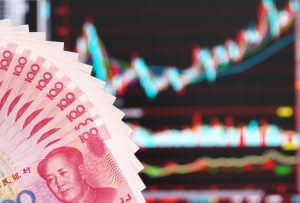As experts struggle to make sense of China’s policymaking process, I have uncovered a method to determine some of the elements of policymaking. Using a machine-learning process and a variety of economic, media, and regulatory factors, I have found ways to understand how certain types of Chinese policies are made. Over a period of three years, I have developed a method to understand the forces that help to shape Chinese state-owned enterprise, Chinese banking, Ministry of Finance, Ministry of Commerce, and National Development and Reform Commission policies.
The process is not simple, as to begin with, one has to understand the policies that are being made, and what forces might contribute to them. For example, in determining how government bodies make state-owned enterprise (SOE) policies, one might posit that officials are sensitive to how SOEs are performing, especially toward the industrial value-added of state owned enterprises and number of loss-making firms. In fact, I find that SOE performance variables do not predict future policies. Instead, mentions of SOEs in the Communist Party’s mouthpiece newspaper People’s Daily and government-funded research on SOEs can explain 97 percent of the SOE policies that are created one month later. There is also a downward time trend, which shows that the number of SOE policies are declining, even if the actual policies being made are more substantive.
What this means is that SOE policies are telegraphed through government-sponsored research papers as well as through the media. This can provide China watchers with some important clues of when new policies will be made. Once the government sets a particular direction, onlookers can monitor the path the government will take with regard to SOEs.
For banking policies, I use a similar method to explain 94 percent of the data distribution on China Banking and Insurance Regulatory Commission policies. At the outset, I believed that financial and monetary indicators would have a strong effect on policy making incidence. I tested numerous variables, such as interbank interest rates, M2, the seven-day repo rate, and one year deposit benchmark rate, with no result. I also believed that real economic indicators might have some impact on banking policies. However, when I tried indicators such as real estate investment, producer price index, consumer price index, and economic policy uncertainty, I found they had no effect on banking policies. The only factors that shaped Chinese banking policies turned out to be monetary policy and foreign exchange policies, all of which affected the incidence of banking policies one month later.
The interpretation of this is that banking regulators are sensitive to other currency-related policies being made. Monetary policy has impacted bank risk-taking, which can create the necessity for banking regulators to crack down on excessively risky projects through policy creation. Foreign exchange policy, represented by State Administration of Foreign Exchange policies, impacts foreign exchange rate risk, which also impacts banking risks and therefore policy creation.
The process of understanding how to explain China’s new technology crackdowns is the challenge that we all face currently. The number of tech crackdown incidents has increased substantially since the end of 2020. China had never undertaken more than two such crackdowns in a four-month period, then from September 2020 to January 2021 there were three, and another three between January and May. Since May 2021 alone, there have been six major crackdowns.
So far, I have tried to explain the technology crackdown using several different economic indicators, without significant results. However, I did find that there is a concurrent increase in economic policy uncertainty when there is a tech crackdown. This is hardly enlightening – in such an environment, where the government is implementing new tech policies one after the other, uncertainty abounds. Currently, I’m still exploring different explanatory factors.
Finally, I just want to note that the reason that I have been using machine learning, confirmed by traditional econometric techniques, is that machine learning works better for nonlinear models. Since policymaking is a complex process that involves human decision-making, it is not normally represented by a linear function, which represents a very simple relationship between the cause and the outcome.
The methods I am using represent a new field of political economy. My hope is that they can help analysts understand the black box of Chinese policymaking. Although the Chinese government has recently embarked upon a regulatory reform that will supposedly render the government more transparent, I am skeptical that officials will ever reveal their exact policymaking process. We are more likely to witness the outcomes alone. Therefore, it helps to have some knowledge of factors that can quantitatively predict when new policies are rolled out.

































